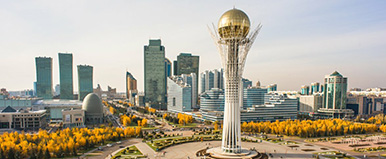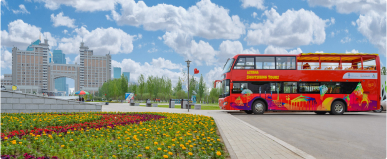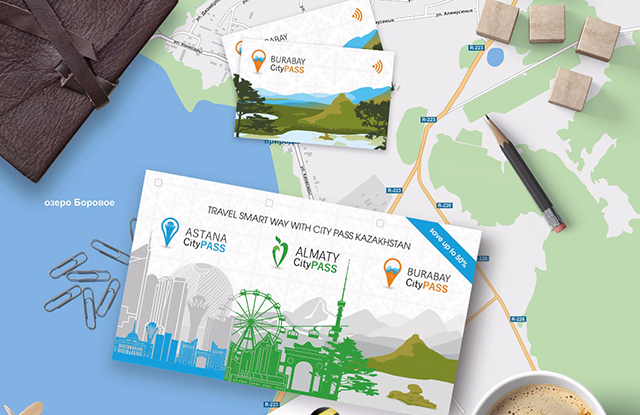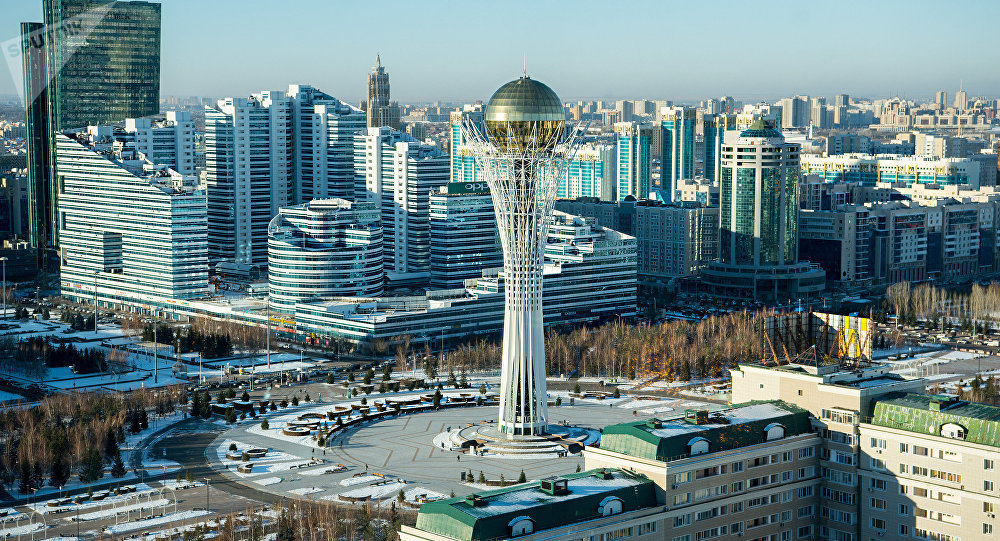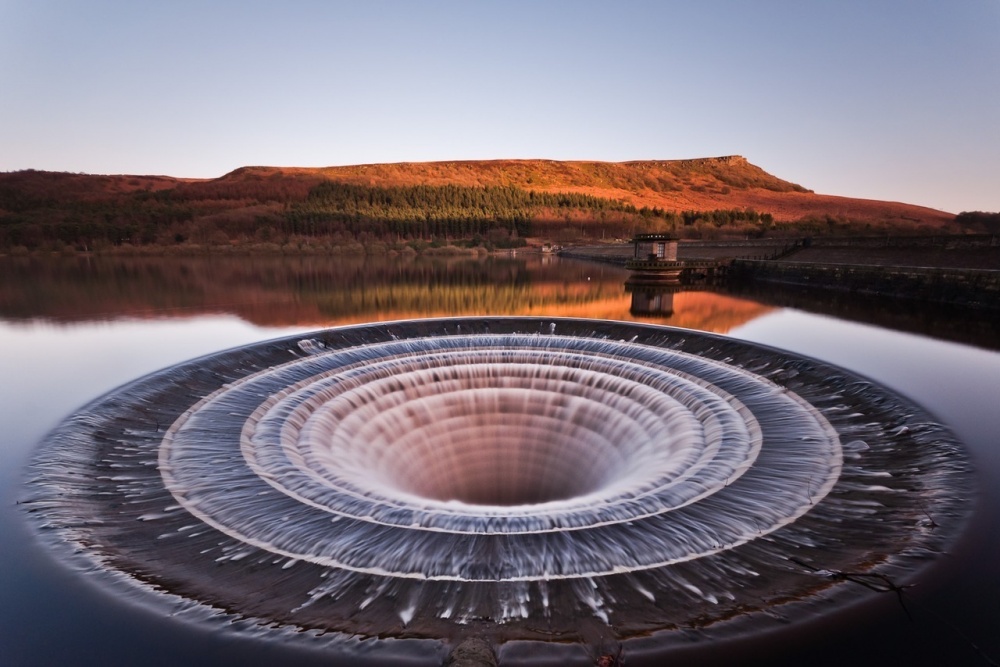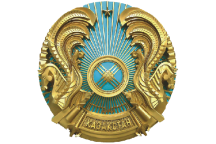29 December 2020
The current generation of Pavlodar and Karaganda region are unlikely to realize the significance for them of the regions of the canal named after Kanysh Satpaev. Moreover, few people know how long the construction of this unique structure was carried out. For more than ten years, workers from all over the Soviet Union worked to ensure that people in the cities and villages of the two regions had drinking water. After much effort and difficulties, the builders still managed to establish an artificial waterway, which to this day has no analogues in any country in the world in terms of the height of the water flow. And for 46 years, the channel has been supplying life-giving moisture to Kazakhstanis.
Where there is water there is life says the Kazakh proverb. Tens of thousands of hectares of Saryarka territory lie in the zone of dry steppes and semi-deserts. In the summer heat, small rivers dry up, rainfall is negligible, fertile land where orchards and berry fields could bloom for a long time remained barren.
In the thirties of the XX century, the use of natural resources of Central Kazakhstan began. The Karaganda coal basin, Dzhezkazgan copper ore deposit, Ekibastuz and Temirtau industrial districts appeared on the map of the country. Agriculture developed, but the available water resources of central Kazakhstan did not meet the needs of developing industry and irrigated agriculture. In this regard, in 1959, a group of scientists led by Academician Kanysh Satpayev proposed a bold project to transfer the Irtysh water to the Saryarka steppes. The project received the support of the Government of the country and was included in the seven-year plan. In February 1962, in the area of the Belaya River, in the Irtysh Channel, the first landing of builders landed. The first to arrive were specialists who had experience in creating large-scale industrial facilities, including the Bukhtarma hydroelectric power station. A little later, the construction site was declared All-Union, shock. During the 12 years of construction of the first stage of the canal, more than ten thousand young enthusiasts from all over the country passed through its crucible. As a result of the work, the builders created an artificial waterway that has no analogues in the world not in terms of length or height of water rise, which we now know as the Kanysh Satpayev Canal.
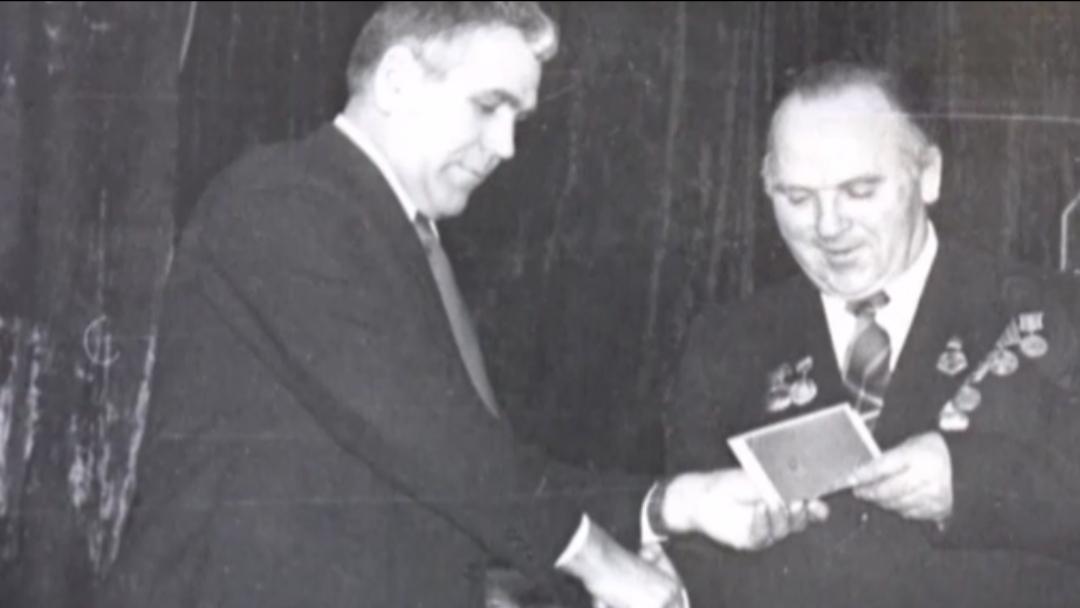
(
On the photo: L. Batalov)
On April 16, 1975, the Irtyshkaraganda Canal was officially put into operation. Since then, this unique hydraulic structure is a strategic water management facility and an alternative source of water supply for the population in industry, energy, agriculture and fisheries of Central Kazakhstan. On the territory of Pavlodar region passes 272 kilometers of the highway in Karaganda region 186. Along the canal there are many reserve and transit reservoirs connected by 22 pumping stations, and the canal ends in the Karaganda region.
I am proud that I grew up in the steppes of Kazakhstan.
One of those who not only participated in the construction of the canal, but also got the first bucket of land on the site of the famous waterway was Leonid Ivanovich Batalov. In 1959, Batalov and his wife and daughter moved to East Kazakhstan to build the Bukhtarma hydroelectric power station, where he completed courses as an excavator operator, and in 1962 came to Kalkaman.
«We arrived on February 11, 1962, and landed at Kalkaman at night. They brought us to the barracks. There were no windows or doors in this dwelling. There we lived for the first time-six workers-excavators. In the morning, we looked around, there was no equipment or equipment at that time. A week later, loads began to arrive, and we unloaded them with the whole team. Then came the experimental land-milling machines. Accepted, mounted. And on this equipment ZM-3000 took out the first cube of the earth, — recalls Leonid Ivanovich.
According to the veteran, the canal began to be built not from the project, but from a clean sheet, the marks were tied to the ground.

The career ladder in those days was rapid. First, Batalov was an excavator operator, then a master for a month, another foreman for the same amount, and then in 1964, on June 20, he was appointed head of the site.
— The most interesting thing is that my father was also sent to the channel as a chief accountant. When he found out that I was promoted, he said: «The fool will be appointed head of the station, he will disperse everyone!». Well, somewhere I was right, I dispersed everyone who was a bad employee. As they say: there are no brothers in cards, and in work, who works, he earns. Order is order, » says the veteran.
The number of workers who built the canal reached 38 thousand people. All settlements located near the canal under construction were on the balance of management. At the time of construction, about 40 barracks were built for the workers. And of course it was necessary to improve the infrastructure of settlements: to build roads that were in poor condition, to conduct water supply, which was not, to repair the boiler room, which did not work. All this also fell on the shoulders of Batalov, since in 1970 he became the deputy head of the department, and a little later his chief.
— The canal is considered a unique structure. Known in all countries. There is no such channel in the world! All channels are self-flowing, there are single-lift, double-lift channels, at a distance of 20-40 meters. But there is no such thing as raising the water to a level of up to 500 meters. The water in the canal is located in the natural soil, in the soil, as intended by nature itself. The soil itself gives it treatment, preserving the quality. Throughout all the kilometers, the water is treated. In the Irtysh, the water is dirtier than in the canal, » says Batalov.
Thanks to Leonid Ivanovich, the channel became known all over the world. It was in Geneva, at the session of the UN Assembly. Representatives from 163 countries listened with great interest to the unique project that allowed to provide water to industrial cities and towns.
— I was in Geneva, where it was established three nominations of the United Nations. But to receive all these awards, the channel was visited by delegations from England, Austria and Italy. We introduced them to the technology of the channel, which greatly surprised the guests. When we stopped at the first hydroelectric station, a table was set near the canal, an Italian came up to me and said: «You are the richest man, since you have such a canal”» They did not understand that we have a state system, and thought that this was my personal channel. To which I replied “ » I am the richest man, because this channel is made for the people.» At the conference in Geneva, I remember, the Americans were most surprised, who did not believe that such a channel could exist. After my speech, they came up to me and asked me again, thinking that the translation was not correct.
When foreigners asked the question: Where does such a unique channel flow, Batalov proudly answered: Where everything is great: The highest pipes of Ekibastuz GRES-2, the largest coal mines and the most unique channel Irtysh-Karaganda. I live there and I’m proud of it!
— The first pumping station was launched in 1966 and in 1967 we supplied water to Ekibastuz. Old-timers said it was impossible to drink water before, as it was salty. And with the arrival of water, we appreciated the channel! There is also a spillway near the village of Shiderty, its task is to ensure a stable ecological situation, — says Leonid Batalov.
Speaking of running water in the village of Shiderty, Leonid Ivanovich also has many interesting memories.
— When the water was launched in the village in 1968, this event was reported to all residents and the territory near the canal was filled with yurts and tents. Locals brought helpless people to admire such a historic event, because few believed that such a vital waterway would be spilled among the steppes. About 15 thousand people came to celebrate this significant event for three days. That was a holiday for the locals, » he recalls.
Batalov was also familiar with the writer Kalmukhan Isabayev, who decided to make a hike along the route of the future canal in the summer. He did it without the help of transport and fellow travelers, only a compass for a landmark and clogged pegs of designers. His journey was about 565 kilometers and lasted 28 days. In the future, for his feat, he was called the «guardsman of the construction site».
But Leonid Ivanovich met him under special circumstances.
— I had a night shift, at six o’clock in the morning, when they already began to prepare for the shift change, some small puny man appears, I go out and see him walking. I thought he was trying to steal something, I grabbed him by the scruff of the neck, and he said, «I’m a writer.» And he explained everything, and talked with him for several hours. Then we kept in touch for many years, » Batalov recalls.
Leonid Ivanovich also met with the Soviet academician, geologist, and public figure Kanysh Imantaevich Satpayev.
«It was 1963. I, as the leader who took out the first bucket, was taken as part of the delegation to the state system of the Union of the USSR. In addition to me, there were: the head of the construction site, the party manager. There was a conversation about equipping the canal. It was amazing for me when I saw Satpayev. Kazakh, cute, tall hair in waves. He goes out and begins to speak, talking about how people need this channel. And he performed in such silence that even a fly flying in the hall could be heard. Everyone listened to him with such interest. After that, the people gave him a standing ovation for patriotism, for the defense of Kazakhstan. He then became an icon for me, an example to follow, » the veteran shares his memories.
For Batalov, his career path is a source of pride. He devoted half of his life to the channel and does not regret it. In his heart, he also keeps the people with whom he worked during the construction of the structure. Moreover, according to the veteran, these are people who participated in the construction of the canal and in the construction of himself as a person. “They made me!»- says Leonid Ivanovich.
— There was a wonderful director who built the White Sea-Baltic Canal, the Moscow canal. He is a prisoner, but at the same time a participant in the Great Patriotic War, and as a person and as a friend was amazing. Head of construction Mikhail Vasilyevich Inyushin, Hero of Socialist Labor. A lot of good people!
For 35 years of Batalov’s work in the role of director, there was a lot of everything. The UPS and downs. But according to the old-timer, before the collapse of the Soviet Union, the canal lived perfectly, made construction, made the necessary arrangements.
— The profit was that allowed to develop the channel, to make repairs in time. The village was put in order, paved roads, water, and sewers were installed in the houses. The boiler room was restored. Everything was kept at the expense of the channel. This was the case until 1997. Then came the privatization. Three times they wanted to privatize it, but the government, and of course Nursultan Nazarbayev, helped to defend the channel.
Now the receiver of Leonid Ivanovich is the current head of the Pavlodar district department of the Kanysh Satpayev canal, Vladimir Fedorovich Yeger, who previously worked as the chief engineer in the Ekibastuz City Water Canal.
About his mentor, the head speaks with respect, but how else, because Batalov knows every structure erected in the days of construction, every pumping station, where what platinum, what concrete. He remembers it all.
— Professionally, deeply knowledgeable specialist, still involved in the life of this building that became his destiny, colleagues who have become friends speak about him. It was always said about Batalov that he was a strict manager, and if an employee left or left for some reason, he was no longer accepted back. Leonid Ivanovich, does not deny it.
— You know, once my wife asked me, and if I stop loving you and leave, will you bring me back? I say, » No matter how hard it is for me, I won’t take you back. This is my principle. You must always respect yourself, respect the cause that you love and always need to be devoted to it. Going back and forth is not good, » says the veteran.
Batalov has received dozens of awards for his career. He is a laureate of the Prize of the Council of Ministers of the USSR, a knight of the Order of the Red Banner of Labor, has a «Badge of Honor», «Kurmet» Special pride for him is that he was awarded the title of Honorary Citizen of Ekibastuz. He was a confidant of the first President of the Republic of Kazakhstan, Nursultan Nazarbayev, three times.
— I had my first meeting with Nursultan Abishevich in 1969. He was then the party secretary, and I worked as a deputy, and my work was connected with mechanization. We Dimitroska factory ordered equipment. Then the party decided everything. And I was told to go to the party committee, where we met with him. Then there were other working meetings, » says Batalov.

How was it
You get used to good things quickly. Turning the tap on the kitchen or in the bathroom, city residents do not even think about where this life-giving moisture comes from. And only elderly Karaganda residents keep in their memory memories of how they crowded in a huge queue at the wells and columns. Another couple of years, and the rapidly developing city would not have been saved by an underground lake, from which the water supply was carried out… the coal capital of Kazakhstan, of course, would not suffer from dehydration, but the fact that without an additional source of water, the current industrial giants did not appear and could not develop.
1974. Irtysh water came to Karaganda, the construction of the canal is being completed. Workers started flushing pipelines around the 32 block, and began filling the long-awaited water of the lake in the park named after the 30th anniversary of the Komsomol. Very soon, water will enter the apartments of Karaganda residents. Since its foundation, Karaganda has used water from Nura, for this purpose, in the early thirties of the 20th century, a canal was dug. However, the city grew, new large industrial facilities appeared, including Kazakhstan’s Magnitogorsk. In addition, tens of thousands of hectares of fertile land in the region remained barren for a long time. The solution to this problem was taken up in the late fifties. The All-Union Institute of Hydro Projects, carried out design work on the implementation of such a large-scale project as the Irtysh-Karaganda canal. In the future, this unique channel will take water from Yermak, now Aksu (author’s note) and deliver water to Karaganda, Temirtau, Zhezkazgan and Ekibastuz. The five-hundred-kilometer river will take the way from Siberia to Kazakhstan. The Irtysh-Karaganda canal has become the largest hydraulic structure in Kazakhstan. And its construction in the sixties became one of the most important construction sites of the Soviet Union.
— The first winter, when we came here, there was a lot of snow, it was impossible to drive, there were no roads in sight. In the summer of 1963-1964, there was terrible dust, which also worsened visibility. The conditions were very difficult at first. There was a district center at a distance of 80 km from us, a cashier was sent for money, he drove for 8-10 hours, nothing can be seen because of dust in summer, because of snow in winter. It was hard to get to the center, which could be transported by car along the canal road there is no road. Good rains, spring floods — nowhere to go. I had to wait. Therefore, there were cases when people simply could freeze. But such difficulties, for us, for the young, were the norm. When the all-Union construction was announced, they began to come to us from Ukraine, from Moldova and central Russia. Komsomol members were not afraid of difficulties, they were still adventurers. Everything as promised began to cost dormitories, although at first we lived in barracks. The salaries were not bad, we knew that we would be well paid for our work. They were given out for 220-250 rubles. To make it clear, the lunch cost an average of 2 rubles. Take one bill three rubles, and even a pack of cigarettes «Belomor-Channel» was enough, — says the builder of the channel Boris Otchesky.
The canal named after Kanysh Satpaev today
In 2002, the Irtysh Karaganda Canal had another strategic function: providing the capital of Kazakhstan with life-giving moisture. For this purpose, the construction of the water pipeline was completed, which is currently in working technical condition. In total, during the period of operation of the canal from 1967 to 2018, the volume of water to consumers amounted to almost 22.5 billion rubles. cubic meters.
The Satpayev Canal is now working to increase the volume of water supply services for agriculture, industry and energy.
Management of the technological process, water supply through the channel, is carried out in Karaganda. There, specialists conduct online round-the-clock monitoring of all works performed on the water route. Under the constant supervision of people who are present on the channel, carry out the operation of equipment, control over everything that happens. It is here that all the information that is collected on the sections of the channel is transmitted to the central dispatch center, where it is analyzed and transmitted to the management, which decides on a particular action with the equipment. The site for clearing the riverbed of the Belaya River was organized in 1971. Hence the water supply to the canal. Workers annually clean the source part of the river after the flood. The Belaya riverbed is blocked by a dam. This creates the necessary water supply for the station. The first pumping station includes 4 units with pipelines, it is through them that powerful vertical pumps pump water into the Irtysh canal. The maximum capacity of the pumping station is 75 cubic meters of water per second. During the year, the station is able to supply almost 2 billion cubic meters of water to the canal. During the passage of the spring flood, the channel needs to cope with the onslaught of the elements. Then all units are switched on and the entire cascade of pumping stations works. Given that the objects of the Satpayev Canal are vulnerable to terrorism, they were included by the Government of the country in the list of objects subject to State protection. A division of the Ministry of Internal Affairs of the Republic of Kazakhstan, ensures their safety today.
The initial section of the canal is served by several dozen people: hydraulic engineers, electricians, inspectors of hydraulic systems, motorists of drainage pumps, operators of technological installations on duty, security guards and personnel. On the channel there is a diving service, it is extremely necessary for the production of underwater repair work on hydraulic structures. The staff of the diving service consists of nine divers who have passed special training and certification in the city of Voronezh in Russia. Young specialists are trained, earn underwater experience, and then go for advanced training. There is a geodesy service. The official duties of the surveyor include monitoring the draft and horizontal suspensions of structures, monitoring the levels in channels and waterworks, and many other work.

(Pictured: pumping station)
5 years after the beginning of the construction of the canal, on December 5, 1967, the first unit was launched at the first pumping station, and at the end of the year, the start-up complex of the canal with a length of 133 km was put into temporary operation by four pumping stations of the Ekibastuz reservoir. The canal provides water to the population of Ekibastuz. Ekibastuz GRES-1 is the largest thermal power plant in Kazakhstan, with a design capacity of 4 thousand MW, and a working capacity of about 3 thousand. The power plant is located 16 km north of the city of Ekibastuz, and 25 km east of the world’s largest coal mine “Bogatyr”. The water supply source of the station is a reservoir filled with water from the Kanysh Satpayev canal.
In the village of Shiderty, there is a production base of the Pavlodar operation Department with repair and mechanical workshops. The number of employees of the Pavlodar operation Department is 780 people.
In the village of Molodezhny, in the mountainous region of Karaganda region, 99 kilometers north of Karaganda, there is the Karaganda department of canal operation named after Kanysh Satpayev, which employs 730 people.
Updated on the channel and equipment. As part of the digitalization, data will be transmitted from objects from the Central Control Room via communication and telemetry channels. As well as the introduction of advanced digital technology for monitoring and accounting of water resources. All reconstruction and repair work is carried out at the expense of the channel’s own funds. For proper water quality in the channel, systematic environmental measures are carried out. They include the settlement of the reservoir of herbivorous fish species, as well as the production and cultivation of fry. Thus, there is a struggle of overgrowth of reservoirs. The plot of biomeliorative purchased a boat and a net for pulling thatch and reeds from the ponds.
(Black and white photos from Batalov’s personal archive)
Information taken from the website EL.KZ
The Author — Elena Strutinskaya


